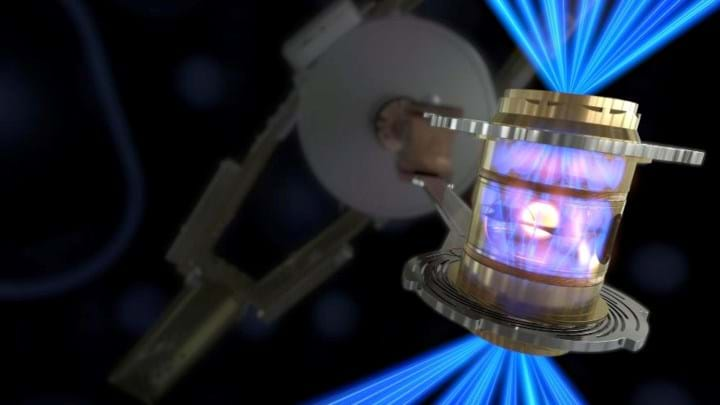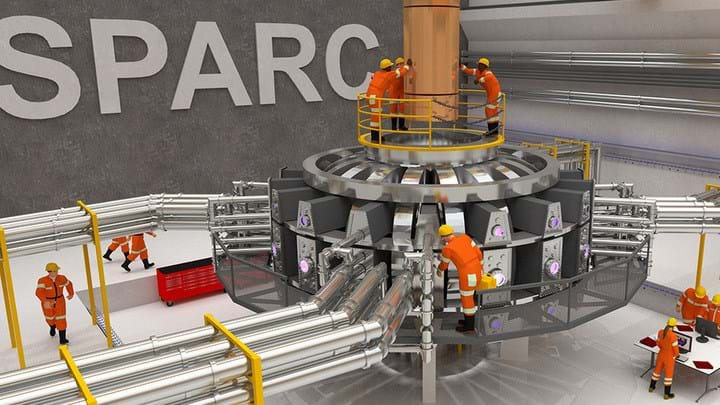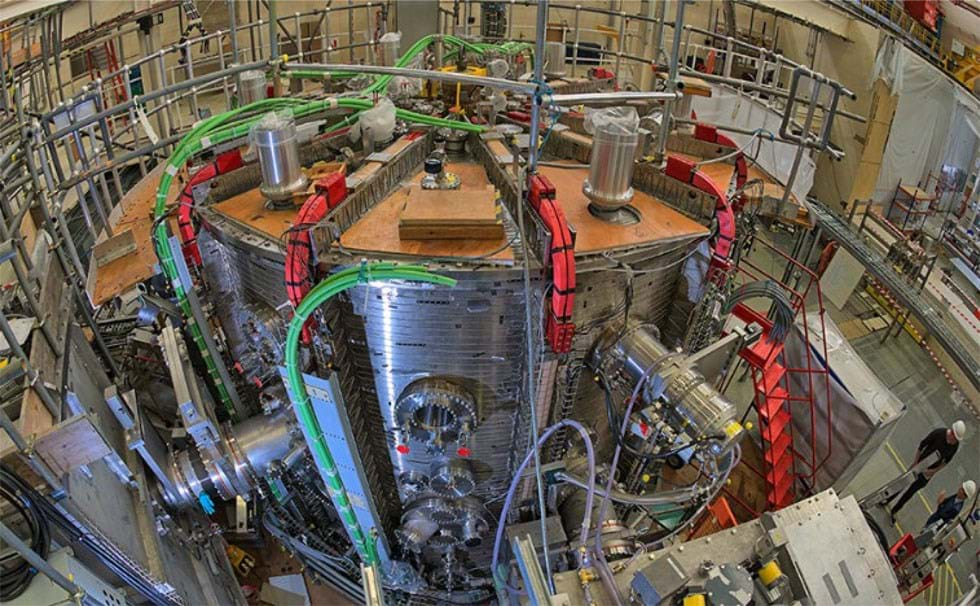

Lawrence Livermore National Laboratory
In 2022, engineers at Lawrence Livermore National Laboratory were the first to demonstrate that fusion ignition generates more fusion energy than that delivered by lasers.
FUSION’s energy development is aligned with artificial intelligence (AI), according to the results of a new survey on how companies are using it to rapidly iterate their technology.
There is a well-known criticism that nuclear fusion has struggled to shake: that the technology is only 30 years away from commercial application, just as it was thirty years ago. That could change with a report from the U.S. Clean Air Task Force detailing how fusion developers are using AI and high-performance computing (HPC) to accelerate design, material selection and control systems with the aim of putting an end to this situation. so-called Sisyphean task.
“Artificial intelligence is advancing at an unprecedented pace, driving demand for clean energy for businesses,” said Sehila Gonzalez de Vicente, global director of Fusion Energy at the US Clean Air Task Force. “Fusion energy has the potential to help meet this demand with a stable, emissions-free energy source capable of operating 24 hours a day. We see a unique opportunity for these technologies to advance hand in hand , with AI helping to accelerate the development of fusion while fusion provides the clean energy needed to support AI’s energy demand. This symbiotic relationship could be transformative for technological innovation and the climate.
The US Clean Air Task Force has identified five key technologies that can be advanced using AI and HPC. These are materials discovery, tritium breeding technologies, superconducting magnets, inertial fusion energy technology and advanced diagnostic and control systems. The report includes more than a dozen case studies of organizations using AI technology to accelerate their development.
Reduce 30 years to 30 months


Ken Filar
AI helps accelerate development of SPARC fusion demonstration plant
Commonwealth Fusion Systems, spun out of MIT in 2018, uses HPC technology to simulate its SPARC demonstration factory. The technology accelerates modeling of particle transport and fluid mechanics. Lessons learned are fed into the next model which then feeds into the next, allowing engineers to accelerate their design cycles.
Jaydeep Deshpande, principal engineer at Commonwealth Fusion Systems, said: “It used to be that a neutron model could take several weeks – now it takes several days. So there’s an order of magnitude improvement in getting that information and putting it back into the physical design of SPARC.
Rick Needham, COO at Commonwealth Fusion Systems, said the process takes their proof of fusion power “from 30 years to 30 months.” Its goal is to achieve a net energy gain – extracting more energy from fusion than is needed to start – by 2027. The company has attracted a lot of commercial interest. Total equity investments in fusion have exceeded $8 billion, including $7 billion since 2020. Of that amount, $2 billion has gone to Commonwealth Fusion Systems as it strives to commercialize its technology by the beginning of the 2030s.
Systems integration
British company nTtau Digital offers fusion developers a generative AI product that helps model interdependencies within fusion systems. The software explores possible designs and runs simulations to produce data that is then used to train surrogate models, particularly useful in cases where experimental or simulated data is scarce. The technology has recently been used to optimize tritium selection while minimizing coil design costs, thereby producing previously unexplored designs. The company plans to release a suite of design and costing tools for fusion plant engineers.
This could be integrated into Nvidia’s Omniverse platform, where engineers can collaborate in a virtual space. This metaverse technology is being used by the United Kingdom Atomic Energy Agency (UKAEA) and the University of Manchester with the aim of designing a fully virtual power plant without physical prototyping. This technology would allow engineers to track every design decision, from magnet configuration to control systems. Once the physical factory begins operating, less optimal choices can be spotted and fed back into the digital model, refining future designs, speeding up development and reducing costs. Last year, Rob Akers, director of IT programs at UKAEA, said TCE that the industry must take risks in supercomputing if it is to overcome climate change at the pace that the crisis demands.


UKAEA
The actual MAST-U device in which UKAEA engineers develop fusion exhaust systems
Simulate the impacts of design decisions
Focused Energy, which designs laser fusion plants, uses generative AI models for so-called cognitive simulation. Jim Gaffney, who was part of the team that made a groundbreaking fusion discovery at Lawrence Livermore National Lab in 2022, explained that “the essence of cognitive simulation is using data to create better models than that we have.” He goes on to say: “We (use generative AI to) synthetically generate results at each step of the process and then optimize them with the goal of arriving at a power plant sooner. Frankly, this would be impossible without AI.
“For example, we can say, ‘Okay, we’re going to do an experiment and make a decision based on it.’ We can then simulate the outcome of that decision five or ten years from now. What if we had made a different decision? Would the results be the same or would they lead to different places? What are the risk profiles for each scenario?
These models can help teams understand the long-term impact of their choices, assessing the risk profiles of different development paths and optimizing decisions for performance and feasibility, the report notes.
All of these simulations carry significant risks. If the extrapolations aren’t accurate enough, the actual machines engineers are asked to build could lead to costly breakdowns.
“Fusion can’t afford many wrong turns,” Gaffney said. Additionally, although less expensive than prototyping, simulations are still expensive, consuming computing resources that can take days, weeks, or even months to complete.
Let me Google this for you
Controlling plasma – the gaseous soup of subatomic particles at the heart of a Tokomak fusion power plant – is a crucial challenge that Google has been addressing. In 2022, its AI division – Google Deepmind – used augmentation algorithms to demonstrate the first AI-driven magnetic control system at EPFL’s TCV tokomak in Switzerland. He transferred a control policy developed during tokomak simulations directly into tokomak hardware, demonstrating that AI systems can regulate and respond in real time to plasma conditions.
Craig Donner, principal engineer at DeepMind, said: “This was really the first proof of principle that AI can work not only in simulation environments, but also in complex hardware environments for very fast and reliable control. real-time with many inputs and outputs. »
Using nuclear power to power energy-hungry AI
Lindsay McQuade, director of energy at Amazon Web Services who sponsored the reportsaid: “As cloud computing and AI continue to evolve, the amount of energy needed to power them increases. This makes the exploration of new energy sources, such as fusion, more important than ever.
While fusion proponents predict the technology could revolutionize energy production by providing clean baseload energy, it is unclear how quickly the technology can help decarbonize the economy. Interest in this technology is certainly growing, with the number of fusion companies created quadrupling from ten to 40 since 2017.
Yet one study carried out by engineers from MIT released last month noted that commercial plant costs are currently unknown given the current level of technological development. Depending on costs, the study reveals that the global share of fusion in electricity production in 2100 could vary between 10 and 50%.
What is evident is tech companies’ growing interest in using nuclear power to power their power-hungry AI data centers with cleaner energy. The IEA predicts that electricity consumption by data centers and artificial intelligence could double between 2022 and 2026, consuming enough electricity to power Japan.
In September, Microsoft signed a $3 billion deal that could allow Constellation Energy to restart its shuttered nuclear reactor at Three-Mile Island in the United States. Last month, Kairos Power signed a deal with Google to build a new nuclear power plant by 2030 to power its data centers.


